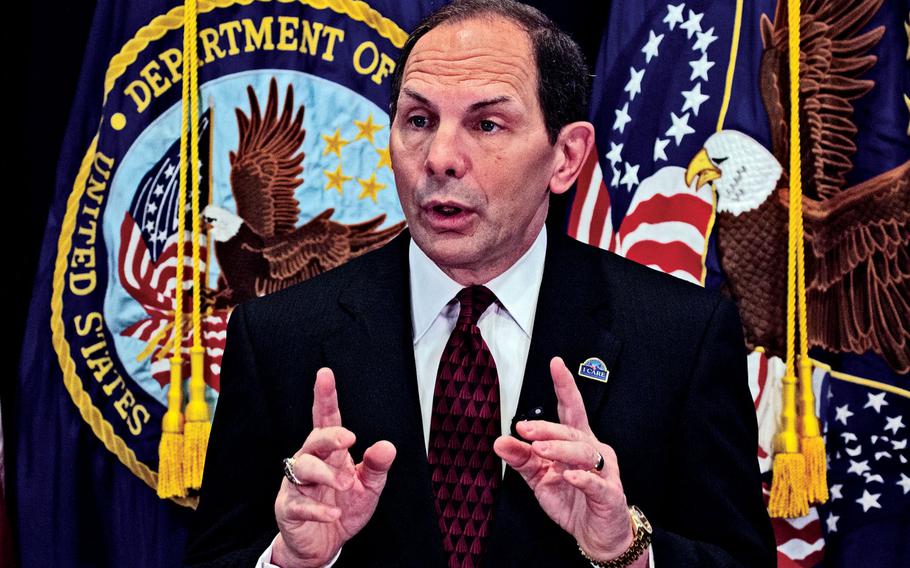
Secretary of Veterans Affairs Bob McDonald speaks to the media at VA's Washington, D.C., headquarters, on Sept.8, 2014. (Joe Gromelski/Stars and Stripes)
WASHINGTON — One of the worst scandals in VA history began in April with word of possible veteran deaths in Phoenix.
A whistleblowing doctor at the Department of Veteran Affairs, Sam Foote, claimed 40 veterans might have died while awaiting care in the agency’s Arizona hospital system.
Delays were not a new problem at VA hospitals. But the situation became a national scandal following another revelation — Foote said VA officials hid the months-long delays by placing the veterans on secret wait lists.
The scandal quickly spread. Within a month, the VA inspector general found the manipulation of patient appointment records was systemic throughout the agency’s nationwide health care system — not just the Arizona hospitals — and Secretary Eric Shinseki, a retired general with a distinguished military service record, was forced to resign in disgrace.
In June, it was revealed about 57,000 veterans were waiting more than three months for care, and about 70 percent of 731 VA hospitals and clinics had faked appointment records to mask the delays.
Stories of VA wrongdoing continued to emerge for months and eventually led the White House and Congress in August to pass an historic overhaul and pump billions of dollars in new spending into the troubled agency. Besides widespread delays and records manipulation, the VA was also criticized for paying out bonuses to executives who oversaw misconduct and long waits, and whitewashing potentially dangerous conduct by staff at its treatment facilities.
But after the overhaul passed, a central question remained: Had veterans died while awaiting care in Phoenix?
The answer took a four-month investigation by the VA inspector general and the results would remain controversial.
The IG in August confirmed many of the problems reported in the system nationwide, as well as the dysfunction in Arizona. Phoenix staff had kept 3,500 veterans who requested appointments in off-the-books waiting lists. Among those, 45 patients, 20 of whom died, “experienced unacceptable and troubling lapses in follow-up, coordination, quality, and continuity of care.”
But auditors said they found no proof that delays caused deaths. Officials with the IG office would later say they expected to find links but were ultimately unable to do it.
“We saw harm … but I couldn’t say delay caused a patient to die,” John Daigh, assistant inspector general for VA health care inspections, told a Senate panel in September. “I have a conclusion, and people can come to their own conclusion.”
Leaked correspondence showed top VA officials had pressed the IG on the language used in the audit, leading some to question the office’s independence. The IG repeatedly and strongly denied any undue influence by the VA on its findings.
Meanwhile, new VA Secretary Bob McDonald, who was appointed in July to clean up the agency, trumpeted the audit findings and saying it was unable to “conclusively assert” a lack of timely health care led to the deaths. McDonald has strongly condemned the conduct at Phoenix and elsewhere, and has unveiled plans to change the VA’s culture to focus on care and service to veterans.